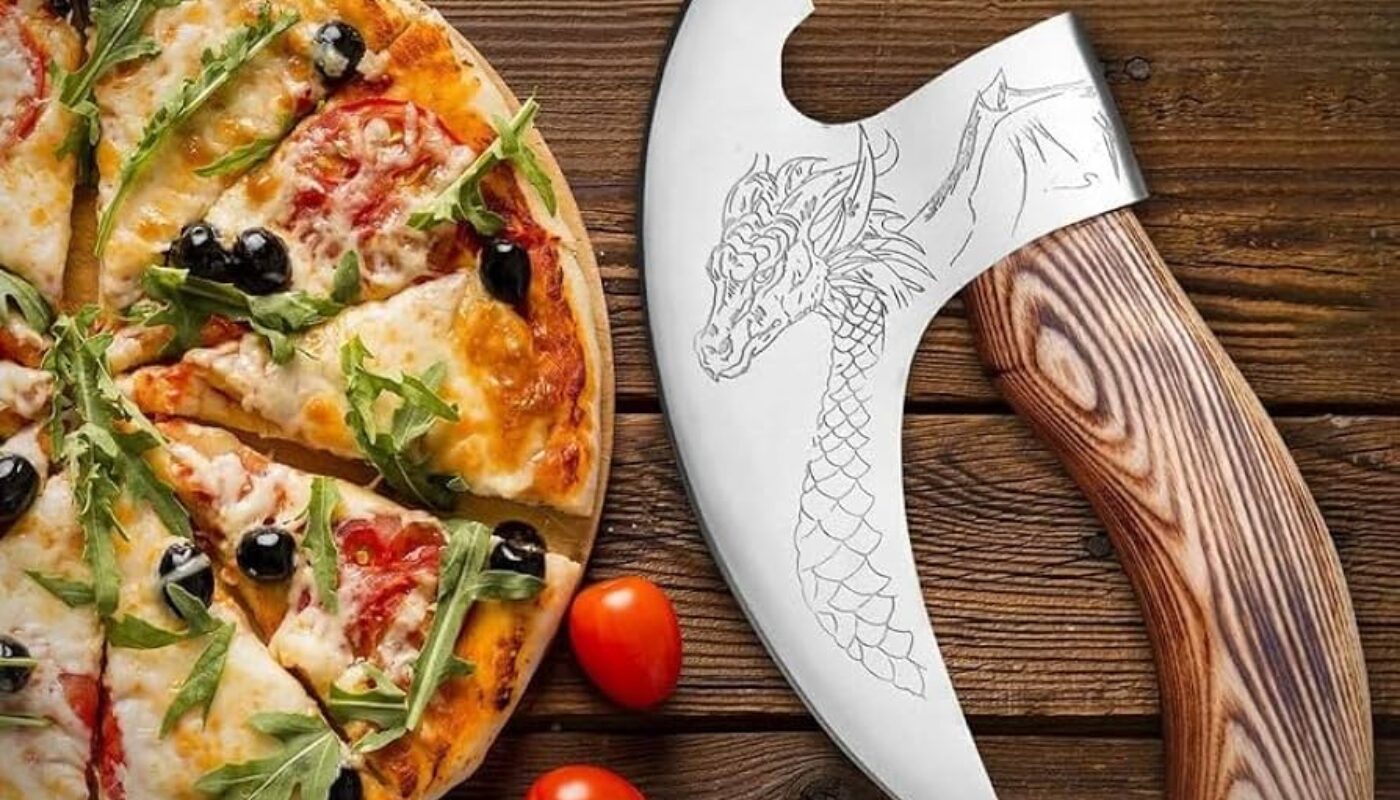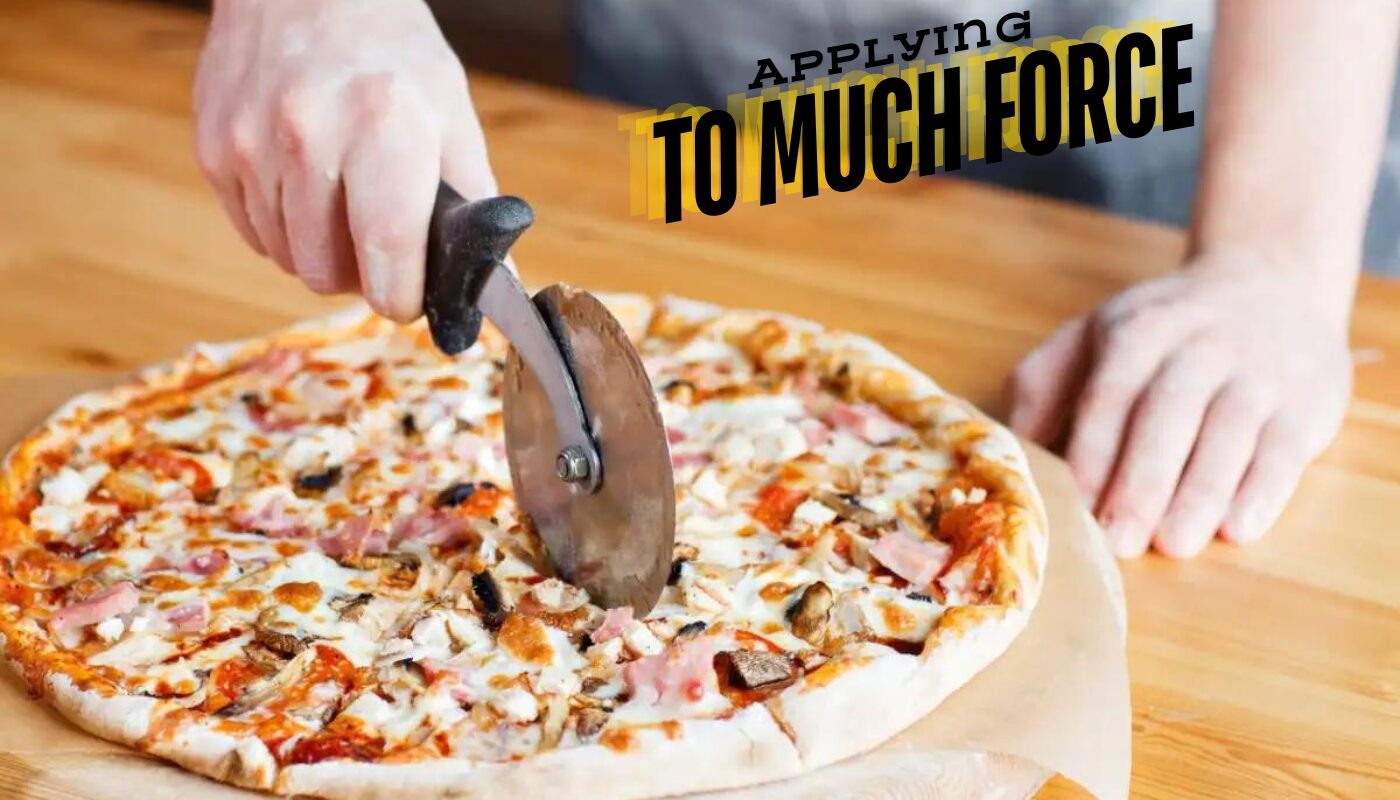- Free Shipping and 100 days free returns.
Yes, the pizza cutter is a necessary tool for anyone who enjoys pizza. To appreciate your pizza, whether it’s a handcrafted masterpiece or a delivery treat, it’s important to use a pizza cutter appropriately. When used properly, your pizza cutter will last longer and you will have a better pizza experience. To guarantee that every slice is flawless, we’ll examine several typical pizza cutter errors in this post and explain how to avoid them.
For the pizza cutter to last a long time and to produce delicious pizza, it must be used correctly. Viking Axe recognizes the significance of this, and in this piece, we’ll examine typical errors made with pizza cutters and how to prevent them. For consistently flawless slices, we can help you choose the right type and use the right technique.
Different pizzas require different cutters. For example, using a wheel cutter on a deep-dish pizza or a pizza axe on a thin crust can result in uneven slices. Match your cutter, whether it’s a wheel, rocker, or pizza axe, to the pizza style for the best results.
A wheel cutter usually does the trick for thin crust or regular pizzas. Consider using a rocker cutter or pizza scissors for thicker or deep-dish pizzas. This ensures that your pizza slices come out clean and even, without having to wrestle with your cutter.

A dull pizza cutter can turn a simple task into a frustrating chore. It can tear your pizza, leave uneven edges, and make the whole process much harder than it needs to be.
Keep your pizza cutter, especially the best pizza axe, sharp for effortless slicing. Regularly sharpen the blade and store it properly to maintain its edge. A sharp cutter ensures clean cuts and extends the life of your tool, making every pizza experience smooth and enjoyable.
Cutting pizza might seem straightforward, but there’s a technique to it. Common errors include not applying even pressure or using the wrong angle, which can lead to messy, uneven slices.
Using a pizza cutter rocker requires the right method. Hold the pizza cutter rocker firmly, apply even pressure, and rock back and forth for clean slices. Demonstrating proper technique ensures perfect cuts every time and prevents damaging your pizza or cutter.
Using the best pizza slicer on glass, metal, or unsuitable surfaces can dull the blade and cause damage. Always use the best pizza slicer on a wooden or composite cutting board to ensure both the slicer and the surface remain in good condition.
Opt for wood or composite cutting boards. These materials are gentle on your cutter’s blade and provide a stable surface for cutting. Avoid cutting directly on metal pans or countertops.

Leaving food residue on your pizza cutter can lead to rust, bacteria growth, and a generally unhygienic tool.
Immediately after use, rinse your pizza cutter with warm water to remove any food particles. For a more thorough clean, use a small brush to get into all the nooks and crannies. Hand washing is usually best, as dishwashers can sometimes cause rust or dull the blade. Make sure to dry the cutter thoroughly before storing it.
Using excessive force not only increases the risk of slipping and injuring yourself but also can damage the cutter over time.
To avoid injury and damage, use the best pizza cutter with the right amount of force. Let the sharp blade of the best pizza cutter do the work with gentle, even pressure. This ensures smooth, clean cuts without excessive force, preserving both the cutter and your pizza.

Pizza cutters can be surprisingly dangerous if not handled properly. Leaving them within reach of children or not storing them safely can lead to accidents.
Store your pizza cutter out of reach of children, and consider using a blade guard for extra protection. Always be mindful of the sharp blade when cleaning or handling the cutter. Safe storage is crucial keep it in a drawer with a safety lock or a knife block.
Your pizza experience can be greatly improved by using the slicer correctly. You may guarantee that your cutter lasts longer and enjoy consistently precisely sliced pizza by avoiding these typical errors and using the advice given. Recall that little attention goes a long way. So bear these suggestions in mind the next time you grab a slice cutter and happy slicing! Remember to leave questions or advice in the comments section; we’d be happy to hear from you.

Sharpen your pizza cutter, especially if it’s the best pizza axe, every few months or whenever you notice it’s not cutting as cleanly. Regular sharpening keeps the blade in top condition and ensures effortless slicing.
While some pizza slicers are labeled dishwasher-safe, hand washing is usually best to prevent rust and dulling. Immediately rinse and clean your cutter after use, then dry it thoroughly before storing it to maintain its sharpness and hygiene.
For optimal results, use your pizza cutter on a wooden or composite cutting board. These materials are gentle on the blade and provide a stable surface for cutting, ensuring both the cutter and the surface remain in good condition. Avoid using it on glass, metal, or countertops.